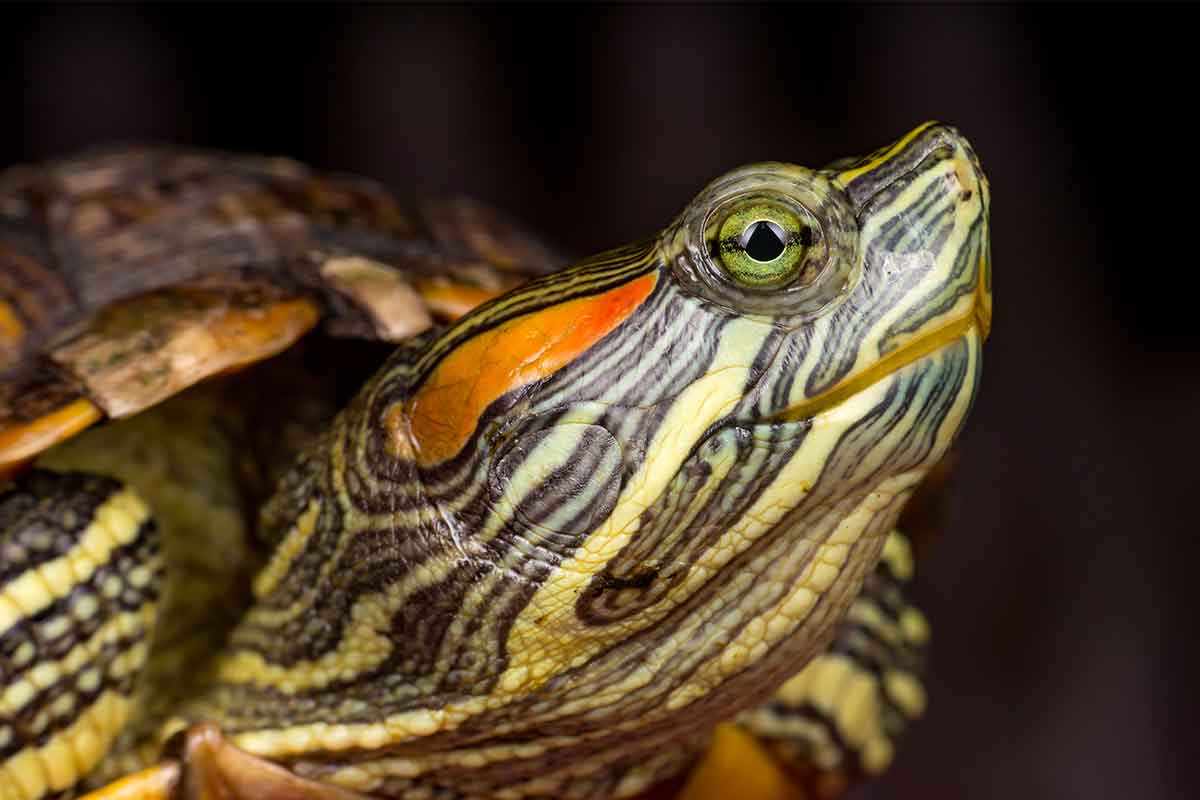Are you old enough to remember buying those little red-eared slider turtles at pet stores when you were a kid? Back in the day, in the 1950s and ‘60s into the early 70s, these turtles were commonly kept as pets. Typically, though, they suffered from inadequate diets and unhygienic habitats and became known for transmitting salmonella infections, which usually occurred when young children handled them and then put their fingers (and sometimes the turtles themselves) in their mouths.
Those habitats were usually plastic containers with plastic palm trees and a small place to swim. Water became soiled quickly, and that likely precipitated the occurrences of salmonella. In 1975, the U.S. government banned sales of red-eared sliders less than four inches in diameter to try to reduce the incidence of salmonella infections in children. They became less commonly seen but are now turning up again at pet stores, flea markets, and fairs.
Today, we know more about caring for these interesting and attractive turtles, and one of the things we know better now is that Fear Free matters for all creatures. If you’ve added a red-eared slider to your family, or are thinking of doing so, here’s what you should know.
Purchase Tips
These turtles sell cheaply and so do their often-inadequate habitats. Be prepared to spend more to get one that’s healthy and to provide him with the proper environment. An appropriate habitat is more expensive than the turtle, but it’s a necessity.
Pet stores should know better, but there are reports of pet stores keeping red-eared sliders in crowded conditions. That’s conducive to development of salmonella, so pay attention to how they’re kept when you’re considering buying one.
As with any pet, an impulse purchase is never a good idea. Research proper care before buying. Books include “Animal Planet: Red-Eared Sliders,” by Katrina Smith; “The Complete IDIOT’s Guide to Turtles & Tortoises,” by Liz Palika; and “Turtles and Tortoises for Dummies,” by Liz Palika. And here’s a free online guide.
Habitat And Lifespan
With proper care and nutrition, red-eared sliders will grow to be about a foot long (males a tad less) and can easily live more than 20 years.
Space is important as the turtles grow. Primary accessories to properly house a red-eared slider are a water filtration system, a water heater, a basking dock, and a basking lamp. Because red-eared sliders are messy feeders and produce a lot of waste, a water filter rated at least double the amount of water in the enclosure is preferred. This reduces the frequency of water changes that will be necessary.
For proper health and growth, red-eared sliders need a basking light that provides UVB and UVA rays to mimic the sun. Purchase either a commercial turtle basking dock or create your own basking platform onto which your turtle can emerge from the water to soak up the artificial sunlight and dry off. Temperatures in the basking area should range from 85 to 90 degrees Fahrenheit.
Prevent Salmonella Infection
The potential threat of salmonella infection is easily eliminated by washing hands thoroughly with soap and water immediately after handling the turtles or any part of their habitat. Emphasize the importance of this to children, and supervise young children in the presence of turtles to ensure that proper hygiene occurs.
Diet And Health
Red-eared sliders are omnivores and will eat about anything. Variety is healthy for them, everything from little pieces of chicken or shrimp, a bit of egg, mealworms, tuna, or salmon in small quantities, along with green or red lettuces and pieces of fruit or berries. Change it up. Supplement with commercial turtle pellets to make sure they get appropriate vitamins and minerals.
Last but not least, ensure proper veterinary care throughout the turtle’s life. Nowadays, there are veterinarians who specialize in the care of reptiles and other exotic pets. Taking your turtle to one of these experts on a regular basis is one of the best things you can do to ensure that he lives a long and healthy life.
This article was reviewed/edited by board-certified veterinary behaviorist Dr. Kenneth Martin and/or veterinary technician specialist in behavior Debbie Martin, LVT.








